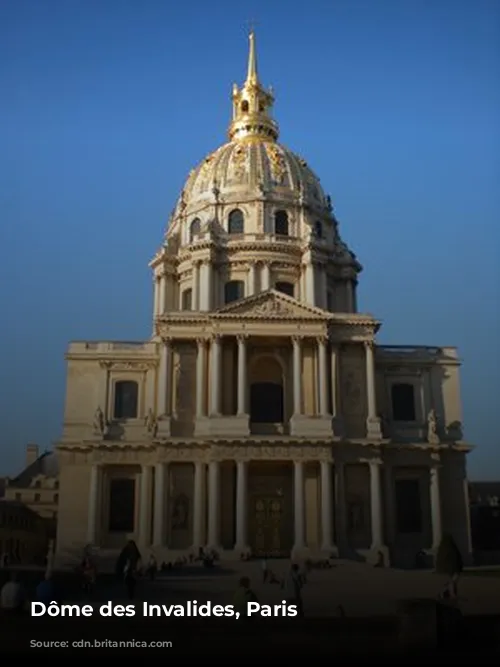Les Invalides, a magnificent complex in Paris, stands as a testament to French history and military might. It’s more than just a building; it’s a story woven through centuries of wars, victories, and the lives of soldiers.
A Home for Veterans and a Place of Worship
Imagine a vast complex filled with courtyards and buildings, all designed to care for disabled veterans and serve as a place of prayer. That’s Les Invalides – an ambitious project born from the vision of King Louis XIV in the 17th century. The King recognized the sacrifices made by the soldiers who fought in his wars and wanted to provide them with a dignified home.
The construction began in 1671 under the direction of architect Libéral Bruant, with the initial focus on housing and care. However, the design of the church presented a challenge. Bruant’s initial plan eventually became the Église des Soldats (Soldiers’ Chapel), a place of worship for the veterans themselves. Pierre Fontaine, a renowned architect and designer, suggested a unique touch: draping the nave with captured enemy banners, a powerful symbol of France’s victories.
Jules Hardouin-Mansart, famous for his work on the Palace of Versailles, was brought in to design the Église du Dôme (Dome Church), a grand chapel intended for the King. The exterior of the dome glistens with gold leaf, while the interior boasts a breathtaking fresco by Charles de La Fosse depicting Louis IX presenting his sword to Christ. The two chapels were seamlessly connected through an oval sanctuary, creating a unique hybrid church dedicated to Louis IX, France’s most revered soldier-king.

A Symbol of Change: From Revolution to the Tomb of Napoleon
The story of Les Invalides is intertwined with the tumultuous events of French history. On July 14, 1789, the very same weapons stored within Les Invalides were used by the revolutionaries who stormed the Bastille. This symbolic act marked a turning point in French history.
In the 19th century, the Dome Church underwent a significant transformation. The floor was removed to create a magnificent crypt, destined to become the final resting place of Napoleon Bonaparte. Louis-Tullius-Joachim Visconti, an Italian-born architect, designed the tomb, featuring a striking red porphyry sarcophagus and five nested coffins. The tomb, completed in 1861, stands as a testament to Napoleon’s legacy. Other notable figures, including Napoleon’s son, Napoleon II, his brothers Joseph and Jérôme Bonaparte, and numerous French marshals and generals, also find their eternal rest within the Dome Church.
The crypt of the Soldiers’ Chapel, known as the Caveau des Gouverneurs (Cave of Governors), houses the remains of other historical figures, including Claude-Joseph Rouget de Lisle, the author of the French national anthem, “La Marseillaise.”

A Legacy That Endures: Museums and Modern Uses
Les Invalides continues to hold a special place in French culture and history. It is now home to the Army Museum, an impressive collection of arms, armor, paintings, and decorations that chronicle the history of the French military. This collection spans centuries, from ancient times to the end of World War II.
Two smaller museums also reside within the complex: the Museum of the Order of the Liberation, showcasing the heroes of World War II, and the Musée des Plans-Reliefs, a collection of intricate relief models, mostly of fortified cities, used for military planning.
Though Les Invalides has undergone many transformations throughout its history, its core purpose remains – a home for veterans and a testament to the enduring spirit of French military history. The military hospital still operates within the complex, and the military governor of Paris maintains his headquarters there. The Soldiers’ Chapel, now known as the Cathédrale St.-Louis des Invalides, continues to serve as a place of worship.
Les Invalides is a powerful symbol of France’s rich past and its enduring commitment to honoring those who have served their country. It stands as a reminder of the sacrifices made and the strength of the human spirit in the face of adversity.








